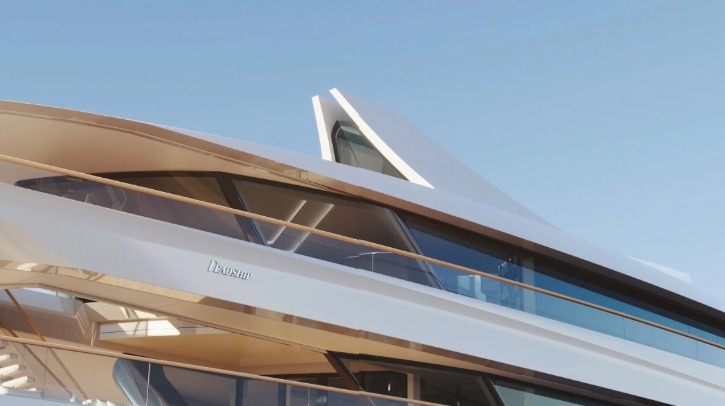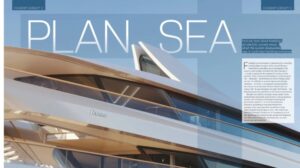Find out more about Feadship’s all-electric concept vessel – which the custom shipbuilder says it could start building tomorrow.
Feadship has developed a reputation for unveiling cutting-edge concepts at the annual Monaco Yacht Show, and 2024 was no exception. The luxury yacht builder revealed the 75m Concept C – a name inspired by the symbol for carbon on the periodic table of elements (Feadship is celebrating its 75th – diamond – anniversary) as well as being a play on ‘sea’. In addition to several spectacular design elements – not least, a hexagonal seating platform that serves as an elevator between decks and can swivel 180° to accommodate the split-level decks – the Feadship team has specified an all-electric powertrain. Though very much a concept vessel, many of the technologies proposed, particularly in the propulsion system, are evolutions of designs Feadship has previously explored – or even demonstrated.
However, according to the team behind the concept, what separates this vessel from many other hypothetical designs is that, “We could start building Concept C tomorrow or incorporate any of her sparkling innovations in the design development of a full custom Feadship, knowing they are truly functional and buildable.”
Power generation
Additional electrical power will be generated by a pair of narrow wave-actuated fins that fold out horizontally from the hull, aft of the anchors. The fins are connected to permanent magnet rotors that supply DC electrical energy directly to the micro-DC grid on board. Estimates are that in a 1m sea, energy generated by their movement will meet one-third of C’s hotel load. In addition, this would reduce the pitch motions by around 20% and the total resistance through the water by 3-4%.
Optimized engine room
Both the centerline propeller and thruster are electric and draw power from a DC electrical grid supplied entirely by fuel cells running on methanol from renewable sources. Fuel cells will provide electrical power without vibration or harmful emissions. Although the initial cost is still higher than internal combustion generators, they return the capital investment in only a few years due to increased efficiency. They are also compact, reducing the space of the ‘engine’ compartment so that it easily fits on one deck.
Efficient design
The highly efficient system of a centerline propeller with an azimuthing thruster behind allowed the vessel’s naval architects to fashion a hull shape with an optimized, upswept afterbody for less turbulence and a quieter wake.
Proven systems
The Concept C hull shape and fully electric propulsion system with in-line contra-rotating propellers is an evolution of Feadship’s Breathe concept first proposed in 2010. A similar system was installed on Feadship Savannah, launched in 2015, which has accrued thousands of open-ocean kilometers.

Larger propeller
This hull shape allows the propeller to be larger than normal. However, with the forward-facing pulling propeller on the thruster behind, the revolutions of the propellers are fewer, for higher efficiency and less vibration. Computer simulations predict C will be 30% more efficient than a typical 75m yacht with dual shafts, propellers and rudders.
Zero noise
Normal cruising speed on the fuel cells is 14kts and a top speed of 17kts is envisaged when battery power is added to the DC electrical grid. The fuel cells are silent, vibration free and produce no harmful emissions.
Fuel cell system
Following on from the hydrogen fuel cell power system developed for Feadship’s 118m Project 821, Concept C will draw 100% of her power needs from fuel cells directly running on methanol, complemented by lithium-metal batteries. Feadship sees green methanol as the best near-term option for onboard energy generation due to its relatively high density and ease of use.

Propulsion spec
Main engines: Full electric propulsion: fixed propeller 1,800kW, azimuthing thruster 1,200kW contra-rotating
Batteries: Lithium metal 3,200kWh, methanol fuel cells 1,800kW
Stabilizers: Hammerhead
Cruising speed: 14kts
Maximum speed: 17kts
Range: Transatlantic
This article was originally published in the January 2024 issue of Electric and Hybrid Marine Technology. To view the magazine in full, click here.




